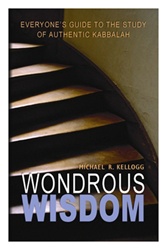
Once you have recognized that burning question within you that demands you seek answers, you must also have an initial desire for the Creator. If it’s there, you need nothing more!
If you have been endowed with such a desire, the whole process is in your hands from that moment on, because all the forces you need are already in your soul.
All it takes is to develop them, and that’s your work. It is in your power to do so because your unique body was created specifically to allow you to attain the purpose of creation.
Therefore, no one can say that they were incapable, that circumstances prevented them from attaining the goal for which they were born in this world.
Start with Authentic Sources
If you’re in the initial stages of your studies, you should read a lot, but only what you can understand. Read a lot and don’t stop. Avoid difficult parts because what you can understand easily now will help you later to understand the harder parts.
The learning material in Kabbalah is divided into two parts:
1. A study of the creation of the worlds, the Partzufim and the Sefirot, the concatenation of the degrees of the concealment of the Creator. That part is crucial to our understanding of the system of creation and its activity. It is studied in the following order: “Preface to the Wisdom of the Kabbalah,” The Study of the Ten Sefirot, selected sections of The Zohar and The Tree of Life. This material must be studied systematically.
2. The ascent of the soul through the degrees of the spiritual worlds from below upward. A student must read and reread freely the parts that are of most interest. These are studied through the articles and the letters. They were not written in the same language as The Study of the Ten Sefirot, but in the language of emotion, ethics, analysis of actions and so on. It is not really the wisdom of Kabbalah, but how it is used for the ascent of the soul. You’ll read about it in the books of Baal HaSulam and Rabash, as well as in Dr. Michael Laitman’s books. The study is comprised of an acquaintance with the material, meaning a systematic scan of the material in order to be able to find references. This is done because people who study Kabbalah so they will ascend spiritually are under perpetual changes, and must pick the material they read according to the state they’re in at that moment.
Thousands of books have been written throughout the history of Kabbalah, but the instructions of Rabash were to study only through these sources:
* The writings of Rav Shimon Bar-Yochai
* The writings of the Ari
* The writings of Baal HaSulam
I suggest new students to start with studying these sources. Later on, when you have absorbed the material, you’ll be able to understand other writers. This will give you a solid basis from which to examine other sources to see if they suit you as well.
At the Bnei Baruch Kabbalah Education & Research Institute, beginners are strongly recommended to use only a number of selected sources. This is because, although everything in the world does point to the Creator, we are unable to see it. In order to see, we must know the right direction, have a correct approach to reality, and learn the fundamentals of the universal design and the rules of its development, its goal, and the limitations of our perception.
How to Aim Oneself through the Study
Some do study Kabbalah for the knowledge alone. To aspire simply to “know” is wonderful, although it mustn’t be an aspiration for knowledge alone, but rather for attainment: in order to attain the studied material from within you, to discover who your “self” is and where within you lies the subject matter the books describe. After all, everything that’s written there is written from within, from the writers’ personal attainment.
No reasoning in the world will help us understand spirituality because it is above our reason and our minds. This is why we can’t feel it. Our senses can only examine things they can grasp and analyze, a knowledge that we generally refer to as “this world.” In order to feel the higher world we must acquire other senses, which we call a “screen.” Only with a screen can we feel what is above us, beyond our material sensations, which our natural senses cannot detect. When we are able to sense the Upper World, we also receive a different mind and a different reason.
First, we get the wisdom and the reason of the higher world. Then, we begin to feel it. The only way to acquire a screen is through the wisdom of Kabbalah.
Therefore, when we read books about Kabbalah, the authors speak to us from exactly the degree they are describing. There is no time in spirituality. As the greatest Kabbalist of our time, Rav Yehuda Ashlag says, “…but out of the great desire and yearning to understand what they are learning, they awaken upon themselves the lights that surround their souls” (“Introduction to the Study of the Ten Sefirot,” item 155).
Out of a great desire to attain what they are studying, the readers awaken in themselves a surrounding Light from the same spiritual degrees they’re reading about. What is important is the intent. But the problem is that we cannot force the right intent on ourselves. That aim should come from the heart, provided the heart really wants it. This will occur if there is a need to attain something higher, if our souls have developed to the point where they need the Creator, not the material things in this world.
 “How to Begin Studying Kabbalah” is based on the book, Wondrous Wisdom: Everyone’s Guide to the Study of Authentic Kabbalah by Michael R. Kellogg.
“How to Begin Studying Kabbalah” is based on the book, Wondrous Wisdom: Everyone’s Guide to the Study of Authentic Kabbalah by Michael R. Kellogg.
Image: CollegeDegrees360. “Student.” Flickr. Yahoo!, 27 July 2012. Web. 30 Oct. 2013. <http://www.flickr.com/photos/83633410@N07/7658278494/>.
